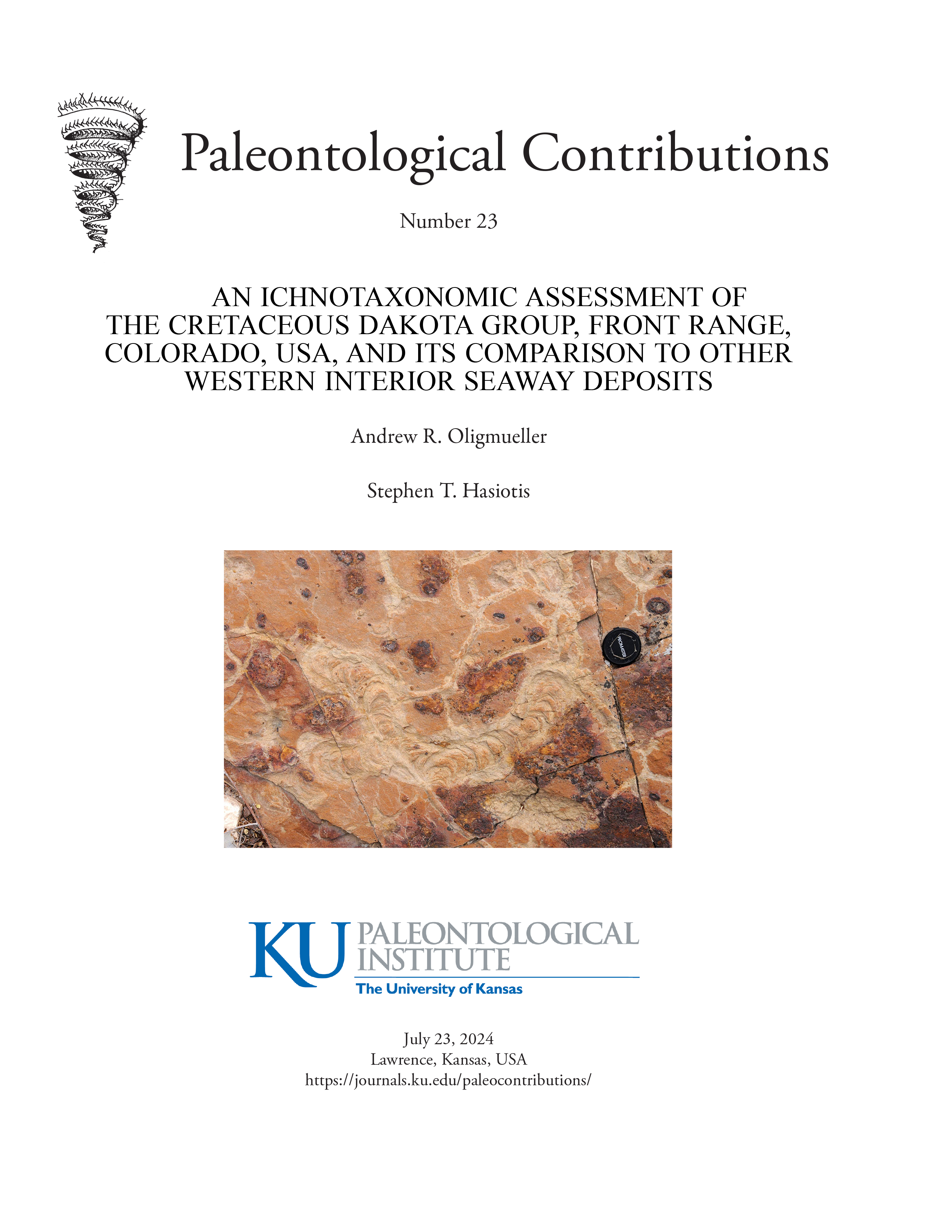An ichnotaxonomic assessment of the Cretaceous Dakota Group, Front Range, Colorado, USA, and its comparison to other Western interior seaway deposits
DOI:
https://doi.org/10.17161/pc.vi23.22542Keywords:
Trace fossils, continental, marine, invertebrate, vertebrate, ichnofaciesAbstract
The Aptian-Cenomanian Dakota Group along the Colorado Front Range is known for its dinosaur tracks; however, it also contains extensive invertebrate marine and continental trace fossils. The Dakota Group in Colorado is subdivided into the Lytle, Plainview, Glencairn (Cañon City), Skull Creek Shale (Denver, Fort Collins), and Muddy formations. Thirty-two invertebrate ichnogenera and 34 ichnospecies were identified: Archaeonassa, Arenicolites, Asterosoma, Asthenopodichnium, Aulichnites, Chondrites, Cochlichnus, Conichnus, Cruziana, Cylindrichnus, Diplocraterion, Gyrolithes, Lockeia, Macaronichnus, Margaritichnus, Naktodemasis, Ophiomorpha, Palaeophycus, Planolites, Protovirgularia, Rhizocorallium, Rosselia, Rusophycus, Schaubcylindrichnus, Scolicia, Skolithos, Taenidium, Teichichnus, Teredolites, Thalassinoides, Treptichnus, and Zoophycos. Six tetrapod ichnogenera and three ichnospecies were identified: Caririchnium, Dromaeosauripus, Hatcherichnus, Ostendichnus, Magnoavipes, and Tetrapodosaurus. Three tetrapod ichnogenera Chelonipus, Ignotornis, and Mehliella have been reported at other sites in the Dakota Group, but none were found at our study sites. Rhizohaloes are reported in the Muddy Formation. Three vertebrate ichnogenera and two ichnospecies were previously described elsewhere by other workers. The Dakota Group trace fossils comprise eight ichnocoenoses–Caririchnium, Diplocraterion, Lockeia, Naktodemasis, Rhizohalo, Scolicia, Skolithos-Teichichnus, and Zoophycos–representing dwelling, deposit- and filter-feeding, and locomotion behaviors of plants, invertebrates, and tetrapods. Twelve previously unreported ichnogenera were identified: Archaeonassa, Asthenopodichnium, Conichnus, Cylindrichnus, Gyrolithes, Macaronichnus, Naktodemasis, Protovirgularia, Rusophycus, Taenidium, Treptichnus, and Zoophycos. This study is the first systematic ichnotaxonomic assessment of the invertebrate trace fossils of the Dakota Group along the Colorado Front Range, which has the highest reported ichnodiversity when compared to other Western Interior Seaway deposits.
Downloads
Published
Issue
Section
License

This work is licensed under a Creative Commons Attribution 4.0 International License.
- Authors retain copyright and the works are licensed under a Creative Commons Attribution 4.0 License that allows others to share the work with an acknowledgement of the work's authorship and initial publication in this journal.
- Authors are permitted and encouraged to post their work online (e.g., in institutional repositories or on their website) prior to and during the submission process, as it can lead to productive exchanges, as well as earlier and greater citation of published work (See The Effect of Open Access)


